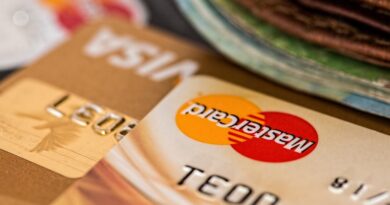Paying Off Student Loans Early: 6 Crucial Pros and Cons for Smarter Debt Management in 2025
Student debt weighs heavily on millions of Americans, with total balances exceeding $1.7 trillion. Paying off student loans early can seem like a straightforward path to financial relief, but it’s not without trade-offs. This approach involves accelerating payments beyond the minimum required, potentially freeing up your budget sooner. In this comprehensive guide, we’ll explore the advantages and drawbacks to help you make an informed decision for 2025.
Table of Contents
Understanding Paying Off Student Loans Early
Paying off student loans early means committing extra funds each month to reduce the principal faster. This tactic shortens the loan term and minimizes interest accrual over time. For federal loans, options like income-driven repayment plans exist, but early payoff bypasses them entirely.
Many borrowers face average debts around $30,000, making this decision pivotal. It requires discipline and a solid financial foundation. Before diving in, assess your overall budget and goals.
Factors like interest rates—often 4-7% for federal loans—influence the benefits. Private loans may carry higher rates, amplifying the case for quick repayment. Always review your loan servicer’s terms to avoid surprises.
In 2025, with economic shifts, timing matters. Inflation and job market changes can affect your ability to allocate extra cash. Understanding these basics sets the stage for weighing pros and cons effectively.

Top Pros of Accelerating Student Loan Repayment
One major advantage of paying off student loans early is substantial interest savings. For a $30,000 loan at 5% interest over 10 years, you might pay over $8,000 in interest. Extra payments could slash that by thousands, depending on your pace.
Financial freedom arrives sooner, reducing monthly obligations. This frees up cash for emergencies or investments. Imagine redirecting those payments to build wealth instead of servicing debt.
Improved credit health follows suit. Consistent on-time payments, especially accelerated ones, boost your score. Lenders view debt-free individuals favorably for future borrowing, like mortgages.
Psychological benefits can’t be overlooked. Eliminating debt stress enhances mental well-being and focus on career growth. Many report increased motivation post-payoff.
Tax implications may favor early payoff too. While interest deductions exist, they’re limited. Clearing the debt avoids future eligibility caps, simplifying your returns.
In a rising interest rate environment, locking in savings now protects against hikes. For variable-rate private loans, this is especially crucial.
Overall, these pros make early repayment appealing for those with stable incomes. It aligns with broader financial independence goals.
Key Cons and Potential Pitfalls
Despite the upsides, paying off student loans early has downsides. Opportunity cost tops the list: funds used for debt could yield higher returns elsewhere. With stock market averages around 7-10% annually, investing might outpace loan interest.
Liquidity risks arise if you tie up cash in payments. Emergencies could force reliance on high-interest credit, negating savings. Building an emergency fund first is essential.
Federal loan perks like forgiveness programs may vanish. If you qualify for public service loan forgiveness, early payoff forfeits that. Explore options via student loan forgiveness programs before accelerating.
Prepayment penalties, though rare for federal loans, exist in some private agreements. Review terms to avoid hidden fees. Budget strain from extra payments can lead to lifestyle cuts or missed savings goals.
Inflation works in your favor for debt; paying early means repaying with today’s dollars rather than inflated future ones. This erodes some benefits over time.
For low-interest loans, the math might not justify rushing. Compare rates to potential investment returns carefully. Balance is key to avoid regret.

Effective Strategies for Paying Off Student Loans
To succeed in paying off student loans, start with a plan. The debt snowball method prioritizes smallest balances for quick wins, building momentum. Alternatively, debt avalanche targets high-interest loans first for maximum savings.
Consider refinancing to lower rates, but weigh federal benefits loss. Tools like calculators help project timelines. Automate extra payments to stay consistent.
Boost income through side hustles, channeling earnings directly to debt. Cut non-essentials via budgeting apps for surplus funds.
Leverage windfalls like bonuses or tax refunds. Round up daily purchases for micro-payments. These habits compound over time.
For federal loans, explore income-driven plans if early payoff isn’t feasible. They cap payments at affordable levels. Consult resources from the U.S. Department of Education’s Federal Student Aid for guidance.
Track progress monthly to stay motivated. Adjust as life changes occur. Patience pays off in the long run.
Integrate this with broader finances, like retirement contributions. A holistic approach ensures sustainable success.
Comparing Repayment Methods
Debt snowball suits motivation-driven individuals. Avalanche appeals to math-focused borrowers. Choose based on your psychology and numbers.
Hybrid approaches work too—pay minimums on low-interest loans while attacking high ones. Flexibility adapts to your situation.
Tools and Resources
Use free online calculators for scenarios. Apps track payments and interest saved. Community forums offer peer support.
Professional advice from financial planners clarifies complexities. Don’t hesitate to seek help early.

When to Consider Paying Off Student Loans Early
Deciding on paying off student loans early depends on your circumstances. If rates exceed 6% and you have emergency savings, go for it. Stable high income supports aggressive tactics.
Conversely, if pursuing forgiveness or investments yield better returns, hold off. Young professionals might prioritize Roth IRAs over debt.
Family planning influences choices—kids mean higher expenses. Homeownership dreams, as in how to qualify for a mortgage, benefit from lower debt-to-income ratios.
Assess risk tolerance: conservative types prefer debt-free status. Aggressive investors tolerate loans for growth potential.
In 2025, monitor policy changes like forgiveness expansions. Economic forecasts suggest steady rates, favoring calculated moves.
Ultimately, align with personal goals. Run projections to visualize outcomes. Consulting experts refines your path.
Paying off student loans early can transform finances when done right. Weigh pros and cons thoughtfully for lasting impact.
Many achieve debt freedom through disciplined strategies. Your journey starts with informed action. Stay committed for financial empowerment.




